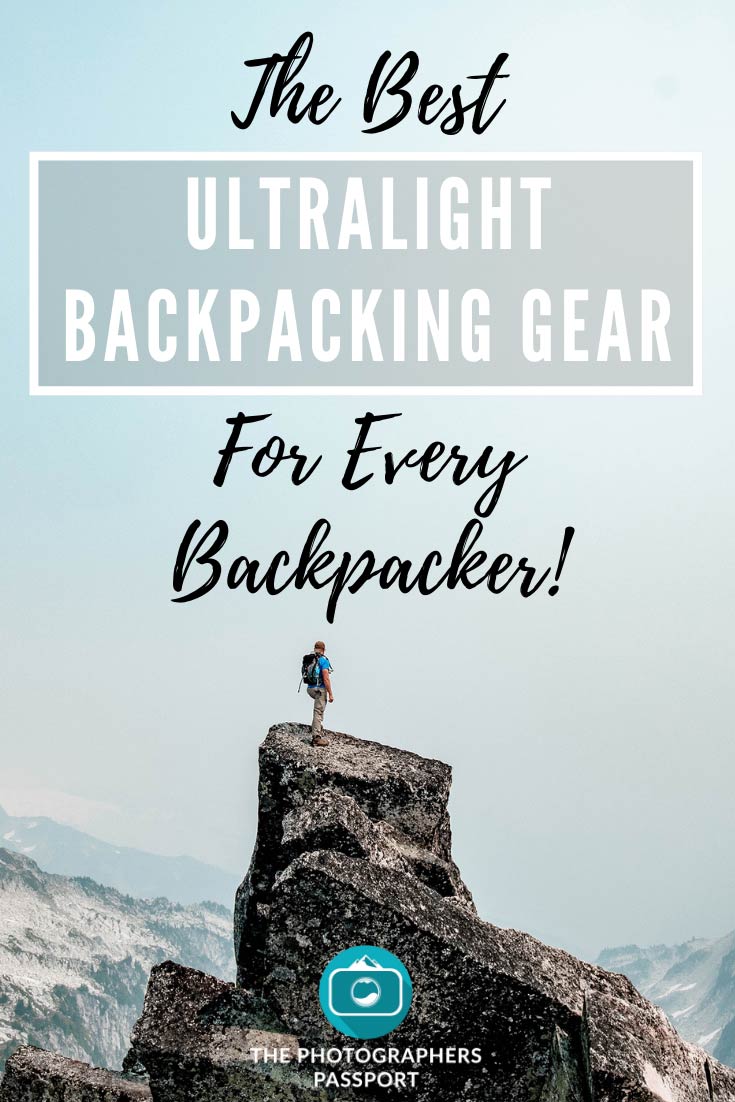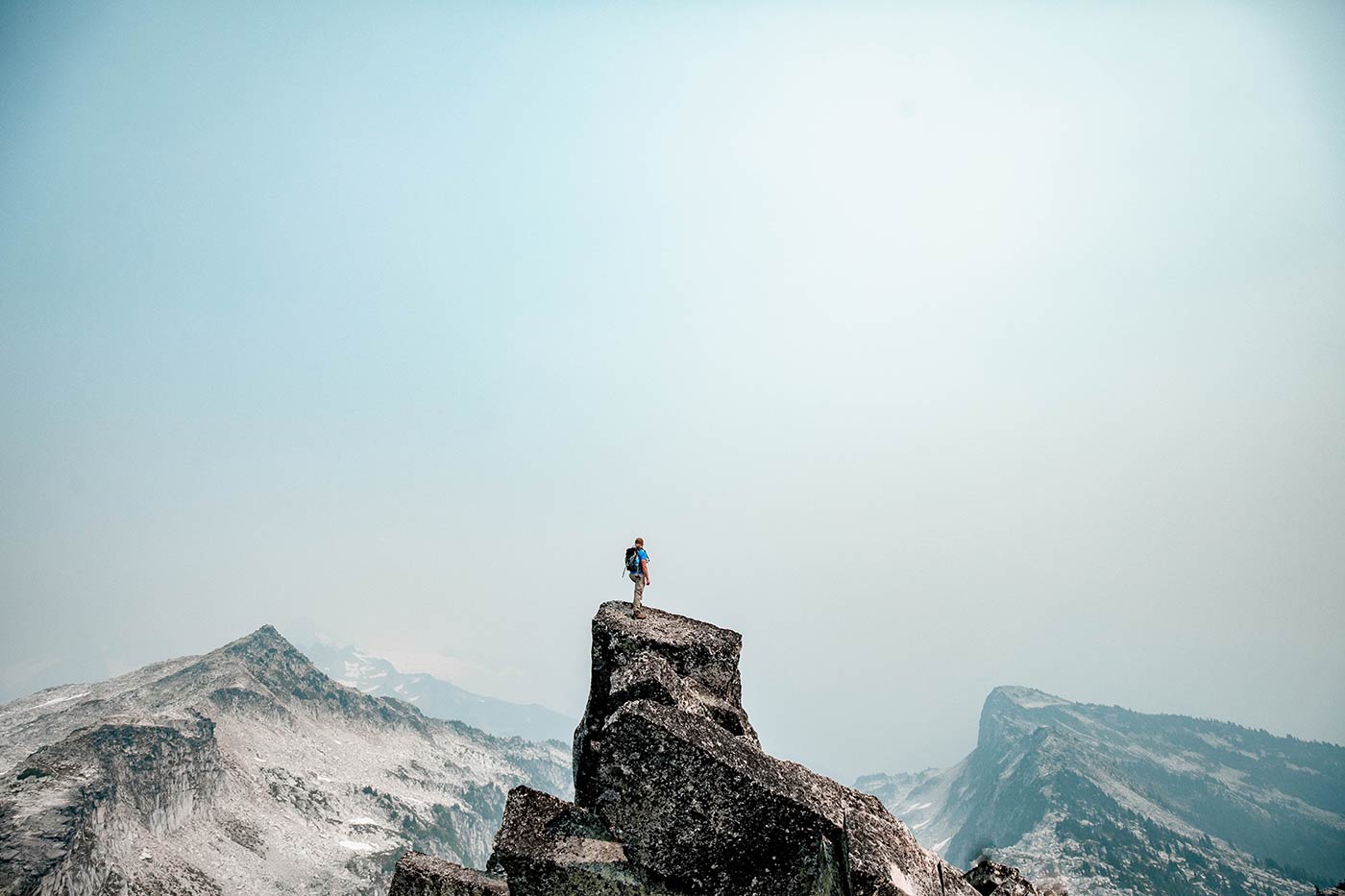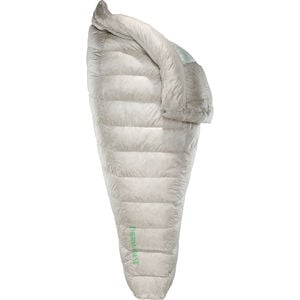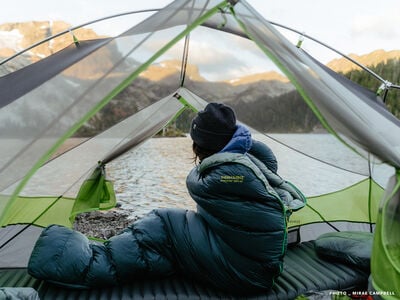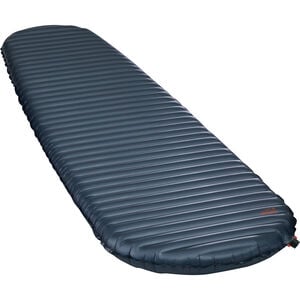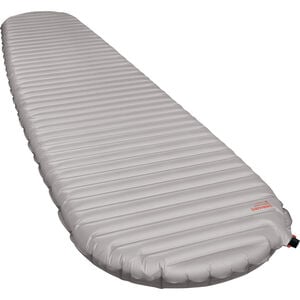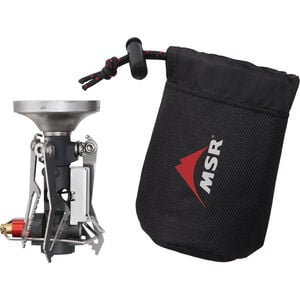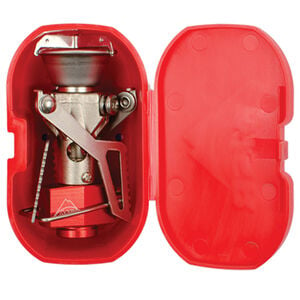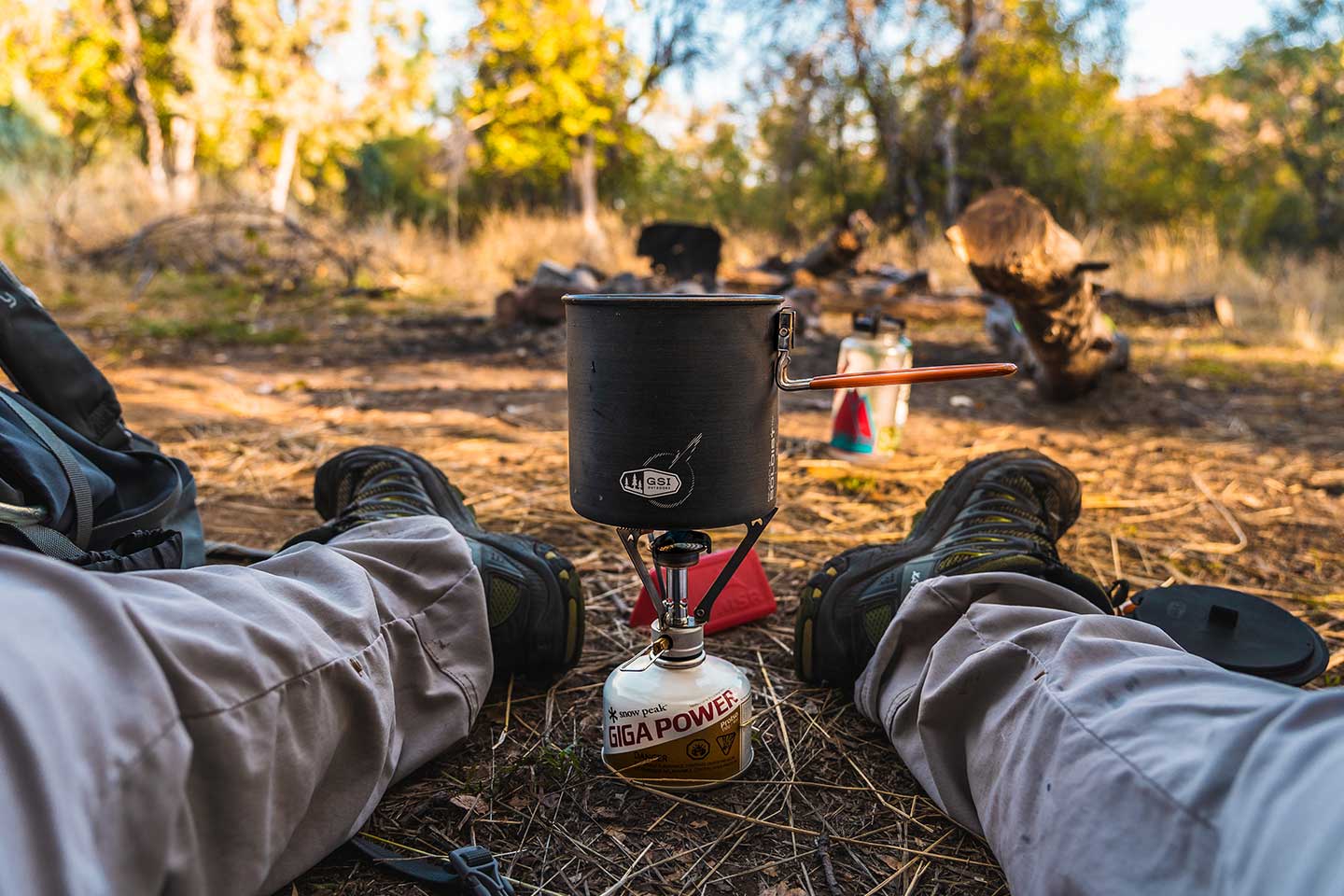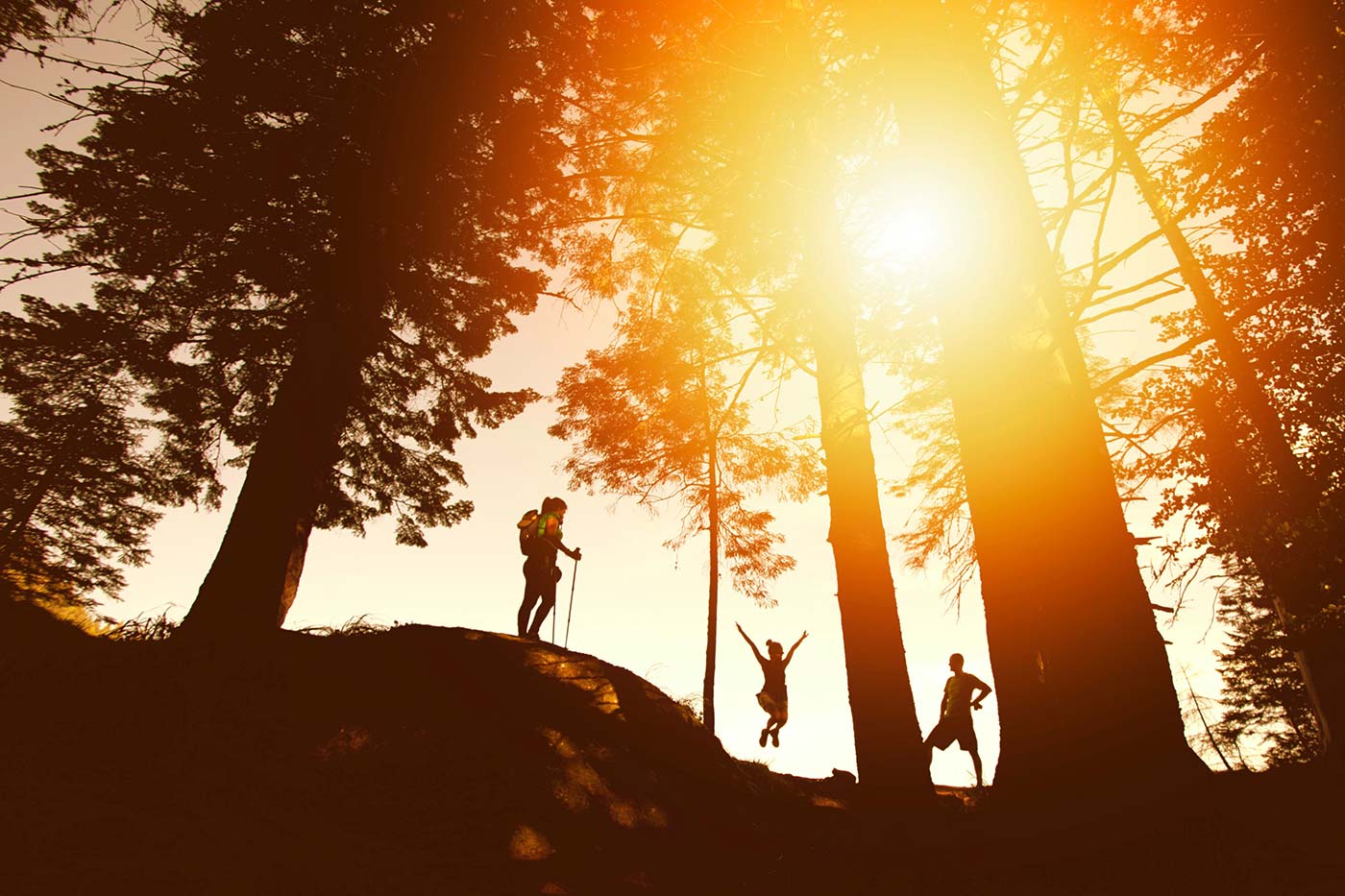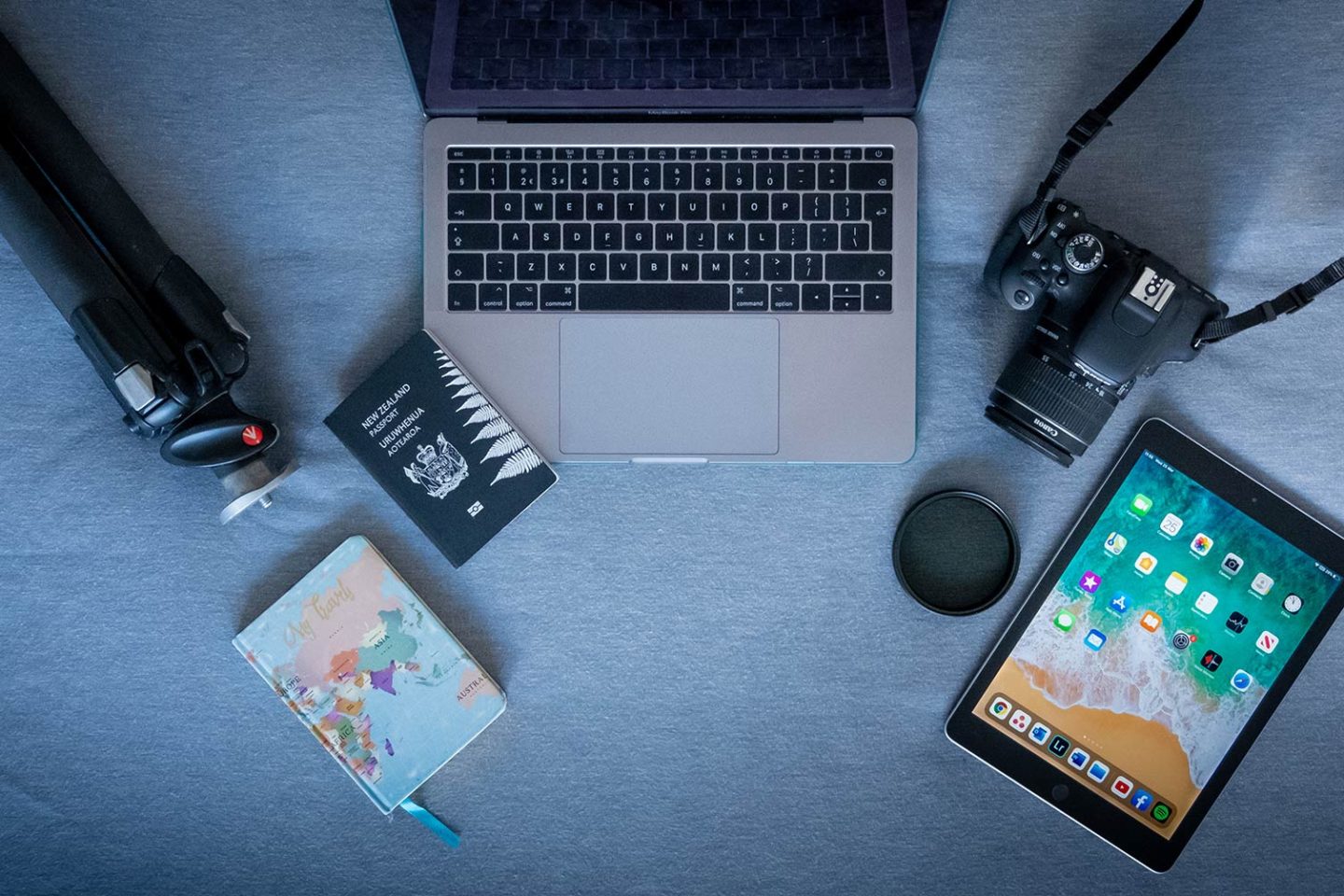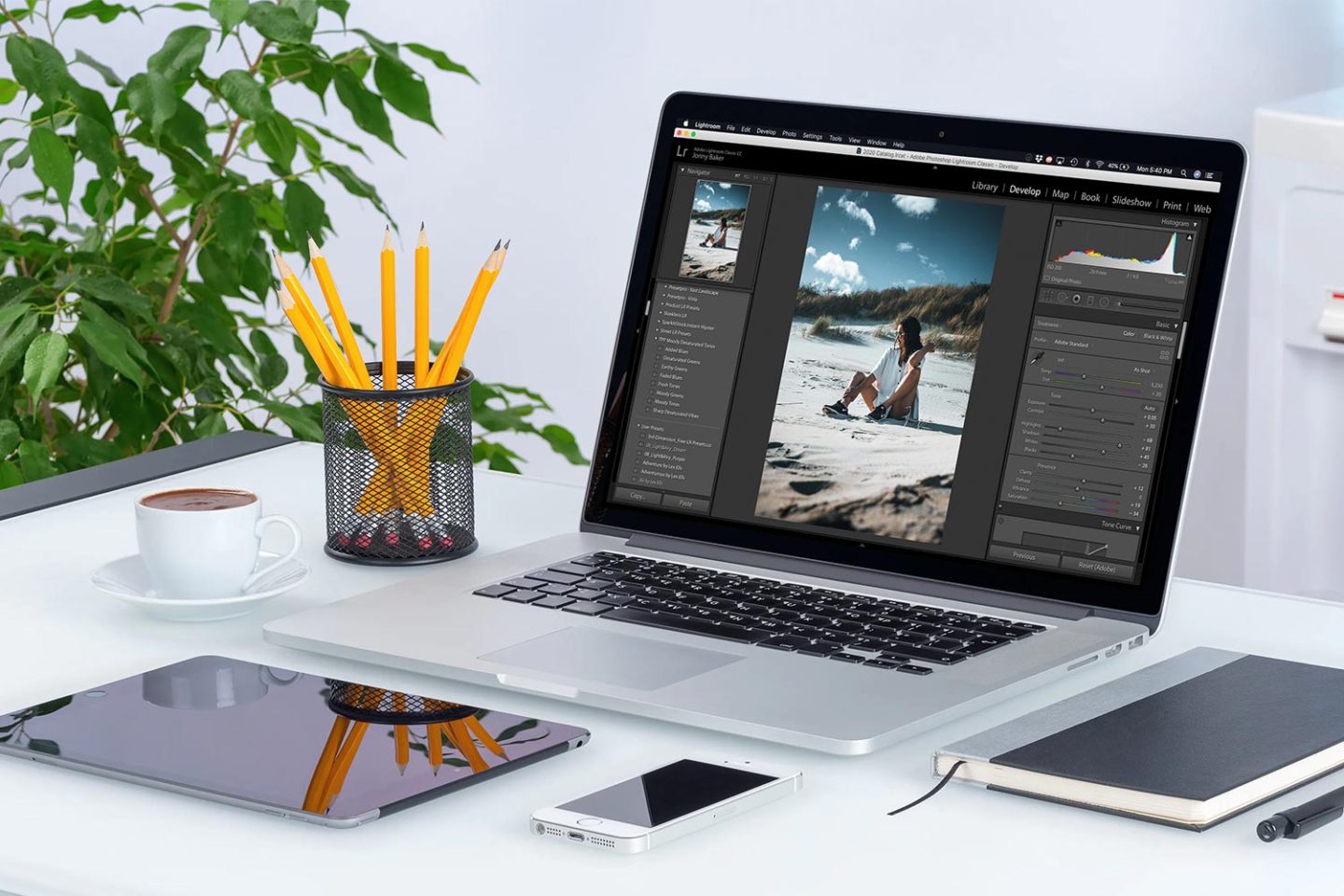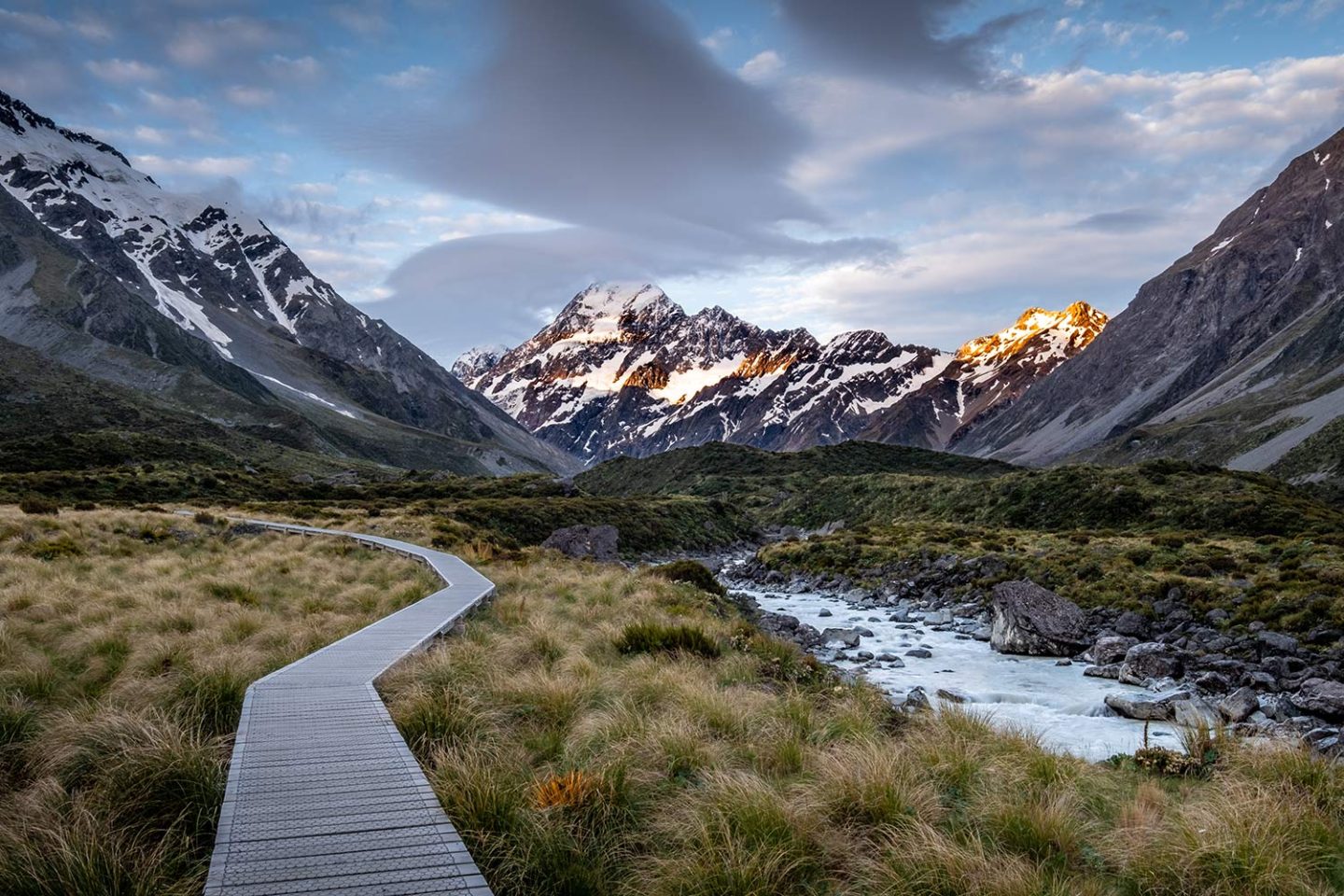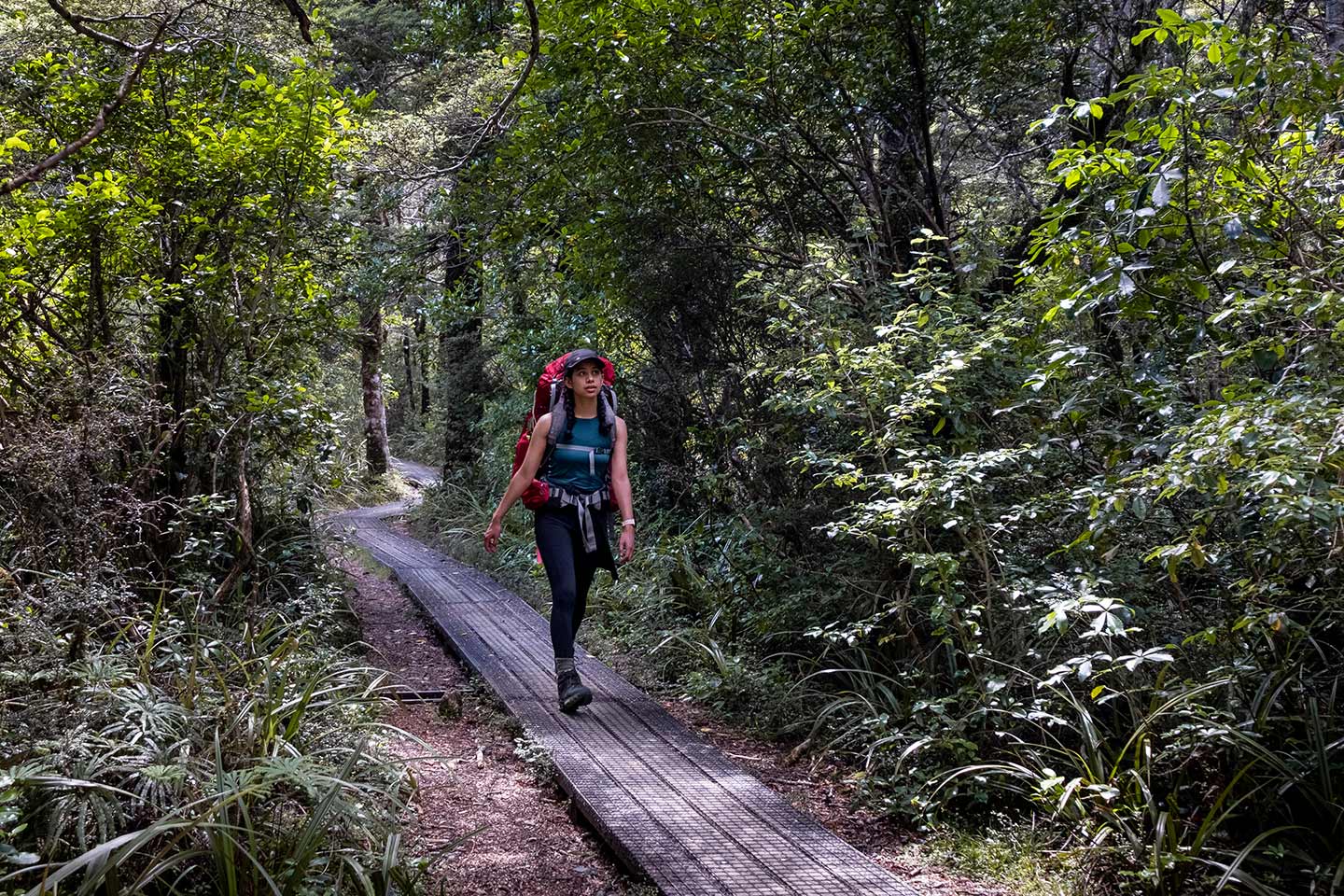This article may contain affiliate/compensated links. For full information, please see our disclaimer here.
If you’re an experienced backpacker you’ll know exactly how easy it can be to ruin your experience on the trails with a heavy backpack. We’ve all been there. I can still remember my first backpacking trip, my pack was heavy, bulky, and full of gear I didn’t need. Fortunately, nowadays there’s no need to carry a heavy pack as more and more emphasis is placed on creating lightweight backpacking gear. Lightweight gear is great but ultralight backpacking has become a way of life for some, this has created a community of like-minded minimalistic backpackers. In this ultralight backpacking gear list we will be covering all the ultralight basics that you need to know about, as well as looking at some great ultra-lightweight gear.
- What is Ultralight Backpacking?
- What is Base Weight and Consumables?
- What is a Good Base Weight for Ultralight Backpacking?
- What is the Best Backpack for Ultralight Backpacking?
- Ultralight Backpacking Gear List – Packs
- What is the Best Ultralight Backpacking Tent?
- Ultralight Backpacking Gear List – Tents
- Choosing Your Ultralight Sleep System
- Ultralight Backpacking Gear List – Sleeping Bags and Quilts
- Ultralight Backpacking Gear List – Sleeping Pads
- Ultralight Backpacking Gear List – The Kitchen
- Ultralight Backpacking Gear List – Water Filter
- Ultralight Backpacking Gear List – Clothing
- Electronics
- First Aid and Toiletries
- Consumables
What is Ultralight Backpacking?
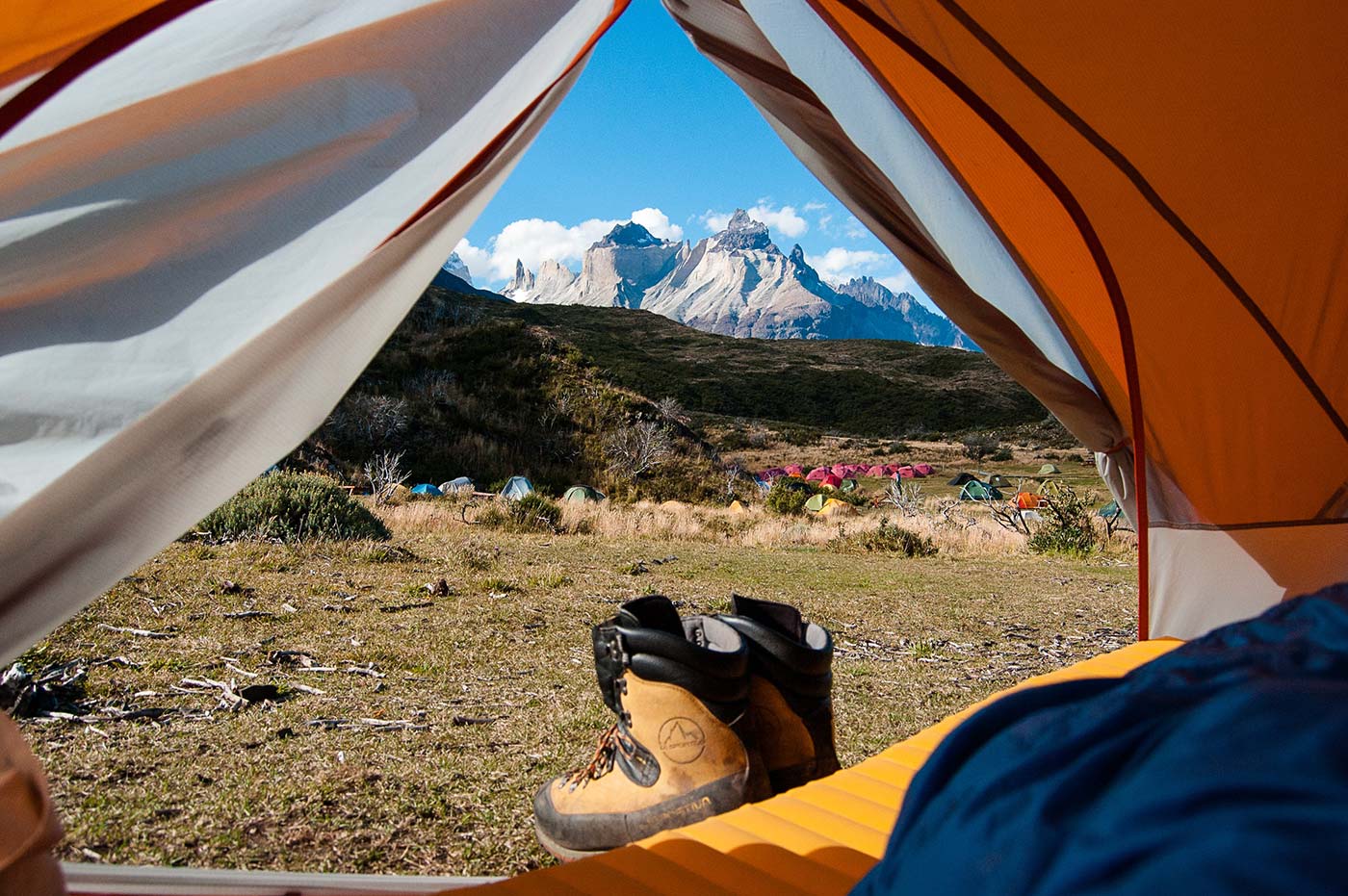
Ultralight backpacking is interesting because it doesn’t necessarily have a solid definition, usually hikers take to ultralight backpacking for one of two reasons.
To some backpackers, it’s all about getting the lightest pack possible. A lighter pack means a more enjoyable time on the trail as it will be less taxing on your body, especially on long-distance hikes. Every ounce is scrutinized to get the base weight as low as possible, sometimes backpackers can take it too far leaving behind items that they actually need.
To other backpackers ultralight backpacking is less about weight and more about simplicity. It’s about taking only what you need out on the trail and being a more minimalist backpacker. Taking the base weight as low as it can get is less imperative, backpackers generally focus on the ‘less is more’ mindset. Ultralight backpacking can mean whatever you want it to mean. If you want to shave off weight ounce by ounce that’s great. If however you want to live life on the trail more simplistically that’s awesome too.
What is Base Weight and Consumables?
The base weight of your pack is essentially the weight of all your gear without any consumables such as food, fuel, and water. The base weight of a pack is what ultralight backpackers generally focus on to get as lightweight as possible.
Consumables are anything in your pack that will fluctuate in weight during your hike. This is anything you consume such as food, water, fuel for your stove, sunscreen, toothpaste, etc. Base weight plus consumables is what makes up the total weight of your pack.
What is a Good Base Weight for Ultralight Backpacking?
There are no official classifications for what makes an ultralight, lightweight, and traditional backpacker. Many backpackers do however define themselves based upon the base weight of their pack. A base weight of 10 pounds and under is generally considered ultralight, 20 pounds and under is lightweight, and 30 pounds and under is for traditional backpackers.
Achieving a base weight of 10 pounds or under can be challenging but if you purchase good quality lightweight gear it’s definitely possible. The quickest way to take pounds off your base weight is by looking at ‘The Big Four’. The big four are generally the four heaviest items of any backpacker’s arsenal, i.e. the pack, tent, sleeping bag and sleeping pad. Focus on these and the base weight of your pack can be dramatically reduced.
What is the Best Backpack for Ultralight Backpacking?
There are so many choices when it comes to backpacking packs but what exactly is the best ultralight backpack?
In my experience, packs are not necessarily a one size fits all scenario. Choosing the right pack will depend on your preferences and will usually be quite a personal decision. For this reason I have chosen to share a few different packs that are very popular among the ultralight community. Whether you enjoy a weekend trip or thru-hike these will see you through.
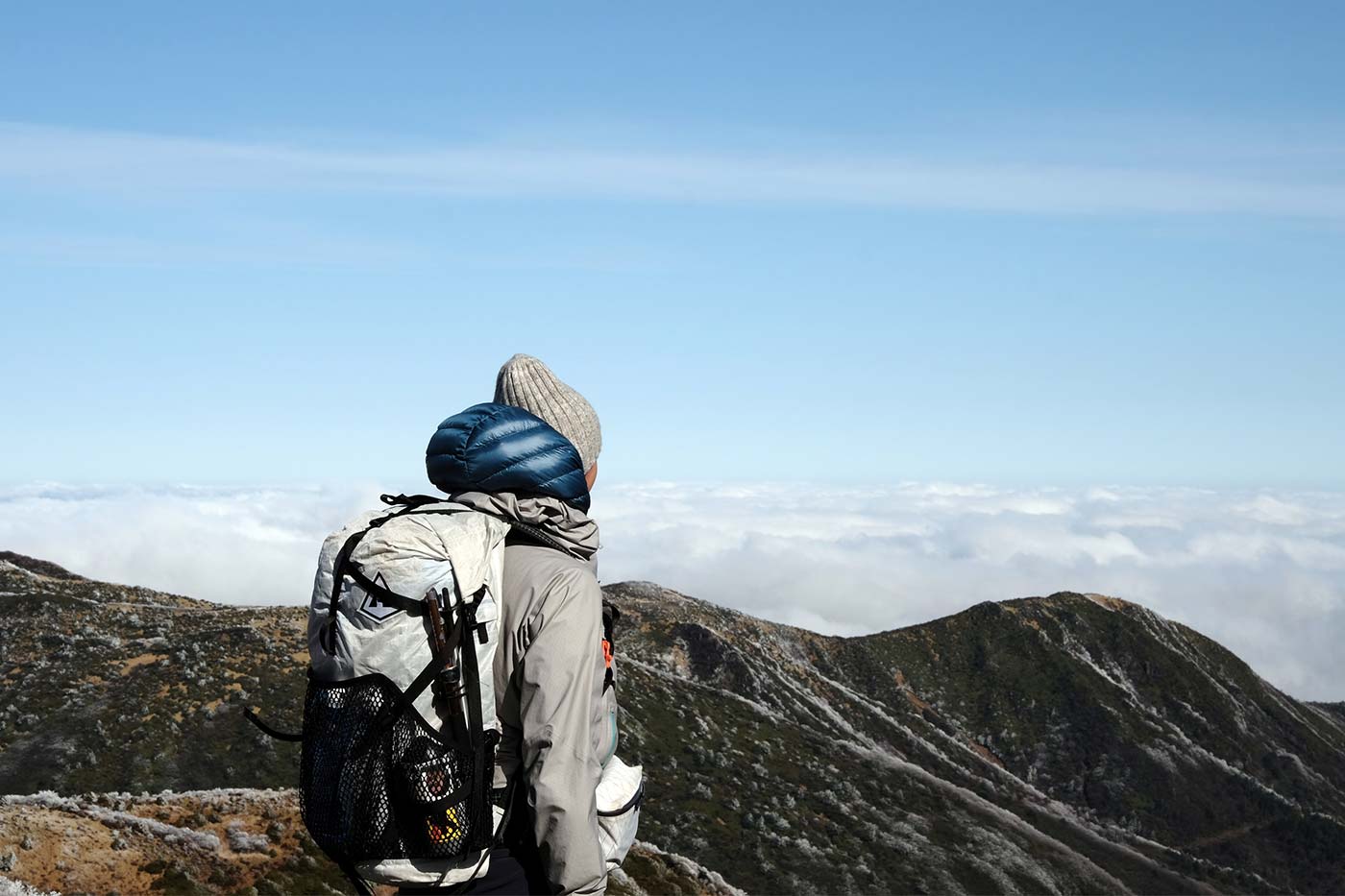
Ultralight Backpacking Gear List – Packs
Zpacks Arc Blast 55L Backpack
This pack is a popular choice among many thru-hikers, this is in part due to the fact it weighs a measly 20.3oz or 575g. The Arc Blast has a capacity of 55 liters, which is plenty for all your gear and then some. The pack is also water resistant which means there’s no need to carry a rain cover.
Waymark Thru 38L-42L Backpack
For the real minimalist backpackers out there, the Waymark Thru Backpack will be the simplicity you’re looking for. This is a frameless pack that ranges from 38L to 42L depending on the pack size you choose.
Something that is really interesting about the Waymark Thru is that you can custom make your own pack. You can choose the color, size, and type of hip belt you want on your pack. The lead time for this varies but is generally 4-7 weeks. If you don’t want to wait for your pack there are usually some pre-made packs for sale on the Waymark website. The Waymark Thru weighs between 17.5oz to 26oz or 496g to 737g this is dependent on the selections you make for your pack.
Gossamer Gear Gorilla 50L
The Gossamer Gear Gorilla 50 liter is a well made pack capable of carrying a max capacity of 30 pounds. It has a removeable hip belt as well as a removeable back panel that doubles up as a sit pad. The Gorilla 50L weighs 28.2oz to 31.3oz or 799g to 887g, depending on the size of pack you choose.
Hyperlite Mountain Gear Southwest 2400 and 3400
The Hyperlite Mountain Gear Southwest series of packs are a little heavier than some of the other contenders but is still a good option. If you are looking for a bit more volume inside the pack then this could be the one for you. The Southwest 2400 has a capacity of 40L and the 3400 has a capacity of 55L. Both these packs are made of very durable materials so will survive whatever you throw at them. The weight of the packs varies between 30oz to 34.9oz or 850g to 989g depending on the model you choose.
What is the Best Ultralight Backpacking Tent?
Next on this ultralight backpacking gear list is the tent and is perhaps where the majority of the weight savings can be made. When it comes to tents there are a few options to choose from, freestanding, non-freestanding and if you want to go ultralight – tarps.
A freestanding tent is the conventional style of tent we are all familiar with. These tents use a series of poles to give the tent its structure and these tents can stand on their own, hence the name. Freestanding tents are easy to set up in most places and are very stable, they can however be heavy and bulky. A non-freestanding tent cannot stand on its own as it has no poles to create the structure, this makes it very lightweight. With these tents you use your trekking poles to create the structure as well as guy lines and stakes to create tension. This style of tent is not only extremely lightweight but is super compact as well which is great news for us ultralight backpackers. The only downside of non-freestanding tents is that they can be difficult to pitch and require ground that is easy to put stakes into.
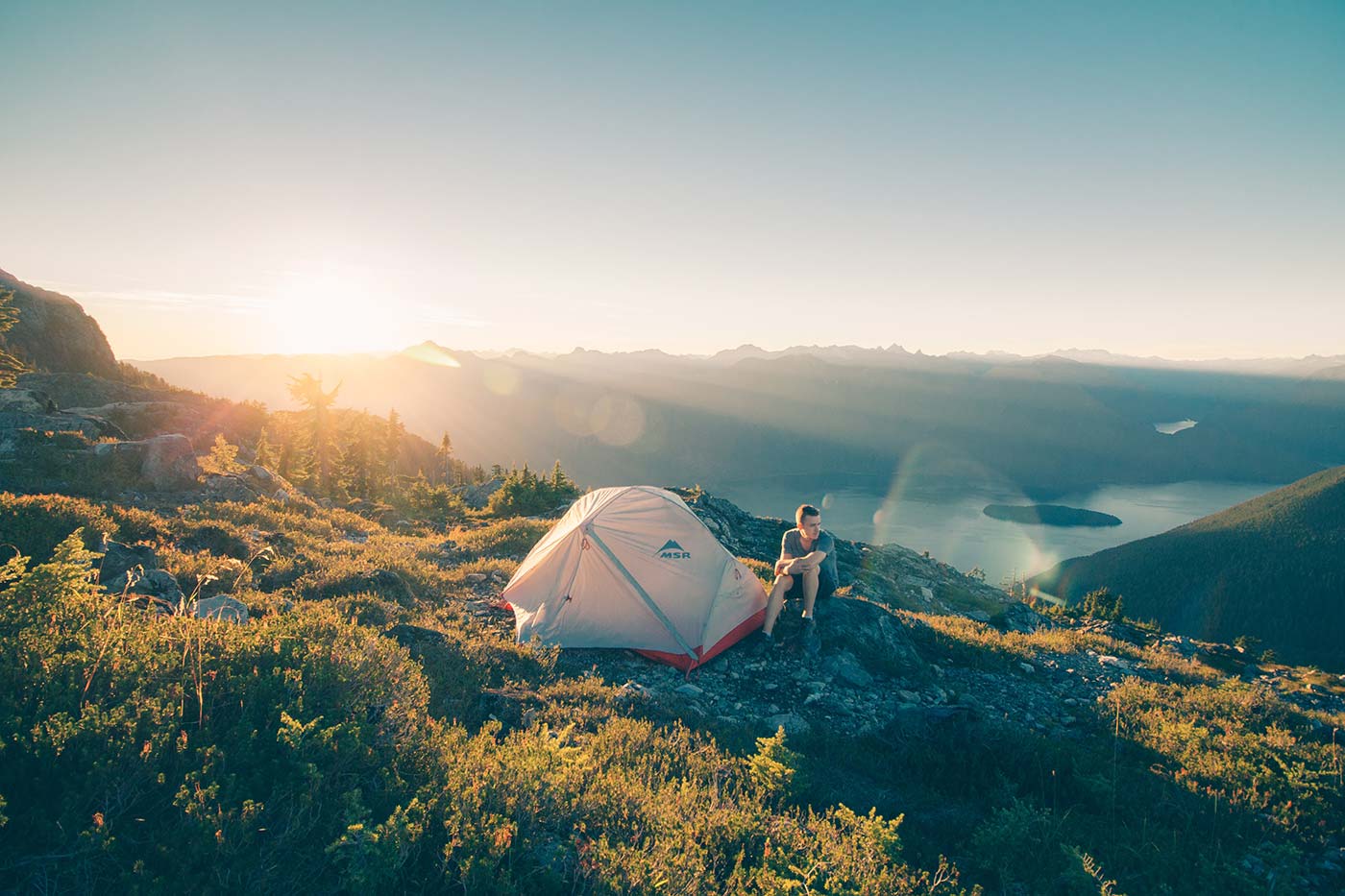
Ultralight Backpacking Gear List – Tents
Zpacks Duplex and Triplex
The Zpacks Duplex and Triplex are very popular tents among the thru-hiking community and this is thanks to their insanely lightweight and compact design. Both tents are non-freestanding which means that you’ll need your trekking poles to pitch it.
The Duplex sleeps 2 people or 1 person if you want your gear inside the tent and only weighs 19oz or 539g, which is amazingly lightweight for a tent.
The Triplex has the same design as the Duplex except it’s bigger it sleeps 3 people or 2 people with their gear inside. Given it is larger than the Duplex, it does weigh more but not by much at 21.9oz or 622g.
Both tents have plenty of headroom inside in the center of the tent. They also have two doors on either side with vestibules which means you don’t have to disturb your partner if you’re up during the night. As well as this, both pack down very small which makes them very ultralight friendly.
Other Tents Worth Considering
The Zpacks Duplex and Triplex certainly are impressive, however they are quite an expensive investment. If you have a budget for your tent, don’t worry there are plenty of more affordable options out there. Check out some of these great non-freestanding tents below:
- Gossamer Gear The One: Weighs 17.7 oz or 503g
- Gossamer Gear The Two: Weighs 23.5 oz or 667g
- Tarptent Protrail: Weighs 24.3 oz or 690g
- Tarptent Motrail: Weighs 34 oz or 964g
- Six Moon Designs Haven Bundle: Weighs 18 oz or 500g
Choosing Your Ultralight Sleep System
The next piece of the puzzle is your ultralight sleep system. A sleep system is made up of a sleeping pad, a sleeping bag or quilt, and a pillow. Your sleeping bag or quilt is what will keep you insulated during the night so that you are warm. Your sleeping pad is what you will sleep on top of, this provides cushioning as well as insulation from the cold ground. Both of these items are vital in ensuring you have a warm and comfortable sleep.
Ultralight Backpacking Gear List – Sleeping Bags and Quilts
Choosing between a sleeping bag or quilt for your ultralight backpacking gear list will depend greatly upon your preferences, each has its pros and cons. Sleeping bags for instance will keep you warmer but will usually be more expensive and weigh more than quilts. A quilt on the other hand costs less and will weigh less as well because it is made up of less material. Quilts do however tend to be more drafty as they don’t offer full 360 degree coverage like a sleeping bag.
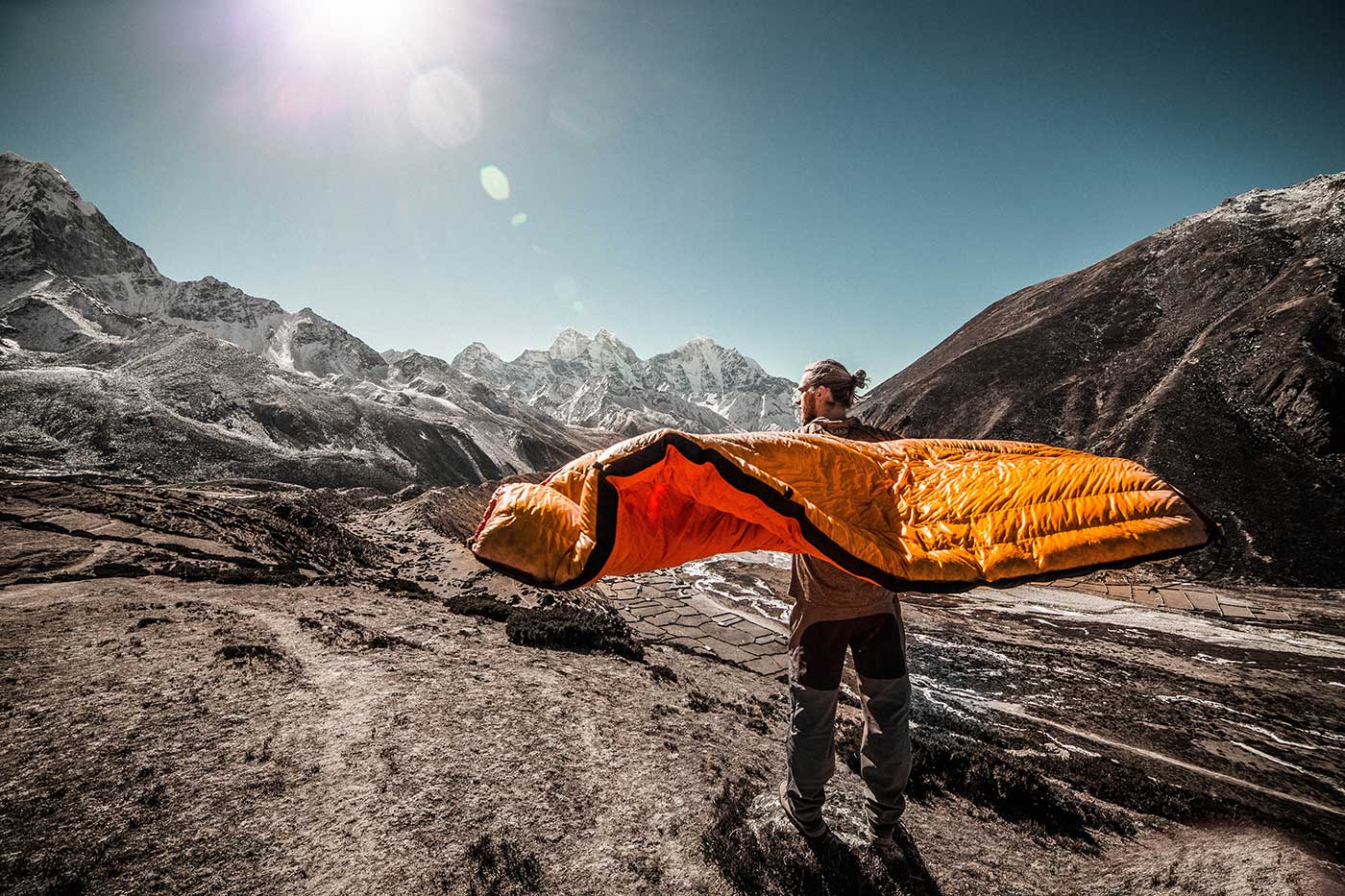
Quilts are a popular choice among ultralight backpackers because of the weight savings that can be made in comparison to sleeping bags. Check out some of the great quilts below.
- Enlightened Equipment Revelation 20: Weighs 20.18 oz to 25.5 oz or 572g to 723g
- Therm-A-Rest Vesper 20: Weighs 19 oz to 21 oz or 539g to 595g
If however, you prefer sleeping bags, you can still get some featherlight bags that will keep you nice and warm. The bags below represent some of the best sleeping bags you will find in the ultralight category.
- Feathered Friends Hummingbird UL 20: Weighs 24 oz to 25.4 oz or 680g or 720g
- REI Co-op Magma 30: Weighs 20 oz to 22 oz or 567g to 624g
- Therm-A-Rest Hyperion 20: Weighs 19 oz to 22 oz or 539g to 624g
Ultralight Backpacking Gear List – Sleeping Pads
Once you have settled on your sleeping bag or quilt, the next thing on the agenda is to find the perfect sleeping pad. There is plenty of choice when it comes to sleeping pads but Therm-A-Rest are the company that are leading the way when it comes to ultralight pads.
Therm-A-Rest ultralight air pads have been the go to for ultralight backpackers for many years. In particular, their NeoAir range of sleeping pads have become the standard for many in the backpacking community. They are so popular, not only because of their lightweight compact nature, but because they offer good insulation from the cold. The R-value of each pad is quite impressive considering how light each one is.
Therm-A-Rest NeoAir UberLite
This is an unbelievably light sleeping pad at only 8.8 oz or 250g for the regular size pad. This is a great air pad if your backpacking trips will be during the summer as it has an R-Value of 2.3.
Therm-A-Rest NeoAir XLite
Another amazing pad from Therm-A-Rest, this pad is a favorite among ultralight backpackers. This is a great 3 season pad with an R-Value of 4.2 weighing only 12.5 oz or 360g.
Therm-A-Rest NeoAir XTherm
The last pad from Therm-A-Rest is the XTherm which is great if you plan on hiking during the winter. This pad has a massive R-Value of 6.9 yet still only weighs 15 oz or 430g for the regular sized pad.
To take your comfort up a level you will need some sort of pillow. The best way to keep it ultralight is to take a pillow case with you and stuff it with some clothes. The options below are some nice lightweight options.
- Zpacks Medium-Plus Pillow: Weighs 1.8 oz or 51g
- Therm-A-Rest Trekker Pillow Case: Weighs 2.3 oz or 70g
Ultralight Backpacking Gear List – The Kitchen
Now we have covered the big four we can look at a few more items that will be vital for a successful trip out on the trails. To start off with you will need to keep yourself fueled with food while out on your backpacking trips. Fortunately, unlike a few of the other items on this ultralight backpacking gear list, a lightweight cook set can be acquired at a very reasonable price.
To start off you will need a stove to cook with, a backpackers stove fueled by a gas cannister is a good lightweight option. The MSR Pocket Rocket 2 and Pocket Rocket Deluxe are good options coming in at 2.6 oz or 73g and 2.9 oz or 83g respectively. For an even lighter stove check out the BRS-3000T which weighs 0.9 oz or 26g. The BRS-3000T is not as reliable or efficient as the Pocket Rocket but is a great option for those super ultralight backpackers.
To accompany your stove, you will also need a lightweight pot to cook your food or boil water in. A pot made from titanium is a popular choice because of its lightweight nature. The titanium pots from Toaks are a nice light option with many different sizes to choose from, the 750ml pot for example only weighs 3 oz or 86g.
The last item to purchase will be a spoon to eat and cook with. The Sea to Summit Alpha Light Long Spoon is popular among ultralight backpackers as it only weighs 0.4 oz or 12g. The long handle on the spoon helps when eating dehydrated or freeze-dried meals out of packets.
Ultralight Backpacking Gear List – Water Filter
When it comes to water filters there is one that has become the standard for ultralight backpackers worldwide, that filter is the Sawyer Squeeze! The Sawyer Squeeze filtration system will allow you to filter water from lakes, rivers and any other freshwater source so that it is safe to drink.
This is a great piece of gear, not only because it’s very lightweight, but it will also allow you to carry less water as you can filter water throughout your hike. The Sawyer Squeeze comes in at 3 oz or 85g and can be used in conjunction with a Smartwater bottle for a real lightweight configuration.
Ultralight Backpacking Gear List – Clothing
We can split clothing for an ultralight trip into two categories, worn clothing and carried clothing. Worn clothing refers to the clothes you will generally be wearing while you are hiking, carried clothing is anything else that is in your pack.
Clothing is something that can be very easy to overpack and the weight can really start to build up. This is an area where you will have to embrace the minimalistic lifestyle if you have a chance of keeping it ultralight. Below is an example of an ultralight clothing packing list, which will help to keep the base weight to a minimum. You’ll notice that there is only 1 set of clothes for hiking because ultralight backpackers generally forgo spare clothing items to keep it as light as possible. You may want to add a few items or leave a few items behind depending on the location you’re hiking, the climate, and the weather.
- 1x short sleeve shirt (polyester or merino wool)
- 1x long sleeve shirt (polyester or merino wool)
- 1x running shorts (quick drying)
- 1x trekking pants (lightweight)
- 1 or 2x underwear (polyester or merino wool)
- 1x rain jacket (lightweight)
- 1x fleece top
- 1x insulated jacket (synthetic or down)
- 1x long underwear
- 1x gloves
- 1x trail running shoes
- 1 or 2x hiking socks
Check out this great video which will help to simplify the process of choosing your hiking clothing.
Electronics
If you want to take your phone, camera, or any other electronics on the trail you will need something to keep the batteries fully charged, this is where a power bank comes in. The Anker PowerCore 10,000 has a good capacity and is only 6.35 oz or 180g.
First Aid and Toiletries
A small first aid kit containing only the essentials should be fine there’s no need to go crazy. When it comes to toiletries, it’s good to have a think about what you really need. At the very least you should take toothpaste, a toothbrush, hand sanitizer, sunscreen, and insect repellent.
Consumables
As we discussed at the start, a consumable is anything which will either be consumed or used, thereby affecting it’s weight throughout your backpacking trip. The weight of your consumables will be heaviest at the start of the hike and lightest at the end of your trip. Below you can see a list of the consumables which are generally part of an ultralight backpacking gear list:
- Food
- Water
- Fuel cannister
- Toothpaste
- Sunscreen
- Hand sanitizer
- Insect repellent Any medicine
That about does it on this ultralight backpacking gear list, I hope it helped you in some way to get closer to an ultralight base weight. No matter what base weight you’re trying to achieve, remember it doesn’t all have to be about weight saving. Going ultralight can be a very freeing experience, helping you take a more simple minimalistic approach to backpacking.
Do you have any ultralight backpacking gear tips we missed? Leave them in the comments below if you think there are any we should add.
Want some more great hiking gear recommendations? Check out the article below:
Pin It!
